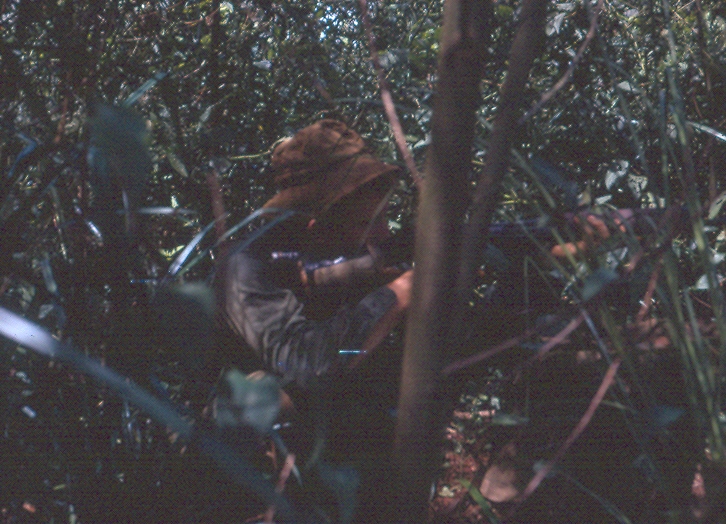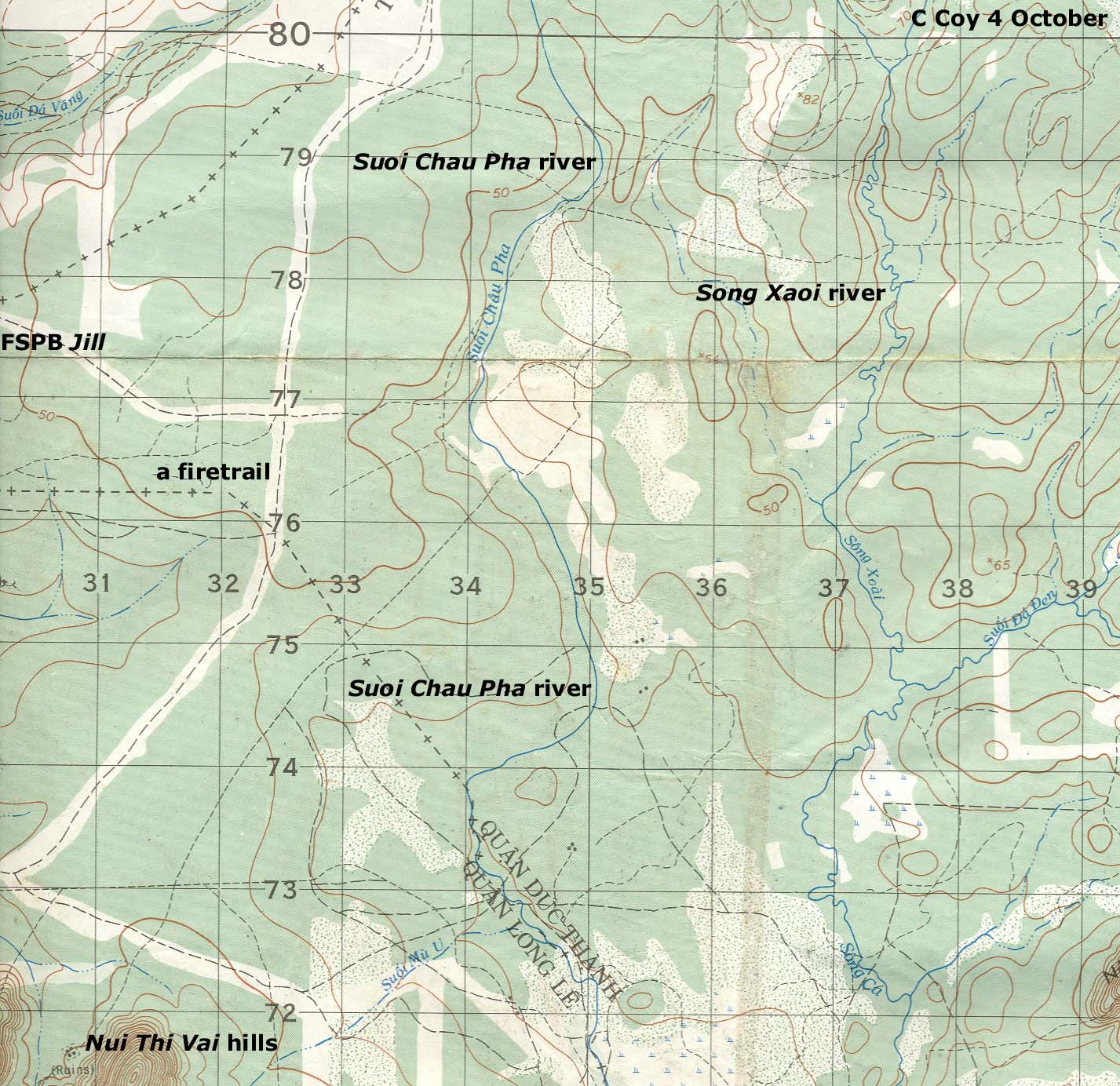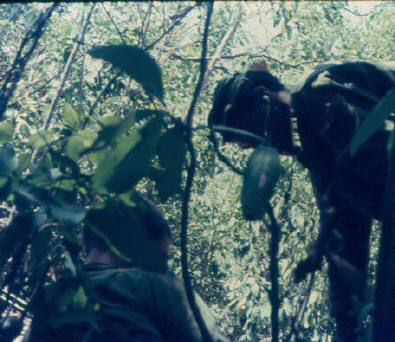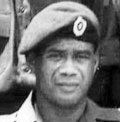Research Sources. Research material came from a number of official and private sources: Australian Unit War Diaries. The Australian War Memorial Museum website provided copies of the original war diaries of the Australian units involved; the war diaries, an actual record of command net radio traffic, senior officer conversations, and sub-unit movements and activities as recorded in the different command posts [CP] as events occurred, have been used to establish the timeline and locations for activities in the days around the accident: AWM95 7/2/62 and 63 cover 2RAR/NZ (ANZAC) Battalion [abbreviated 2RAR]
activities 1 – 20 October 1970. New Zealand Documents. With permission from Chief of Defence Force, New Zealand National Archives provided access to two files: ABFK 7560 W5130 5202/2/26 is the official investigation into the accident. Some detail in the Investigation is not supported by more recent research. ABFK 7560 W5130 5202/2/20 is a mixture of mis-filed papers including an after action report by message from HQ NZ Vietnam Force Saigon to Army HQ, documentation concerning the repatriation of Pte Cooper’s remains, and media reports about the accident. CO 2RAR Book. Some detail is from the book ‘Second to None’ [printed 1995] by the Commanding Officer [CO] 2RAR in 1970 Lt Col John Church RAR, in which he identified his sources as ‘my diaries and the notes I made on the Intelligence summaries and periodic after action reports during my service in SVN’, however some of his locations for subunits in October 1970 do not match the official war diaries, and the book does not mention the 3Pl accident nor the reason for the demise of Pte Tom Cooper. 2RAR Official Journal. The 2RAR official journal of their 2nd tour with 1ATF was useful for the list of unit personnel; in all other matters the journal lacked detail. War Dogs. Background on the Australian war dogs with 1ATF, in particular Milo and Marcus with 2RAR in 1970, is from the book ‘Trackers’ by Pte Peter Haran, an original Australian war dog handler. Further detail was by email from Peter Haran, Pte Wilf Matusch a visual tracker, Lt John Alcock the 2RAR Tracker platoon commander, and from Australian war dog websites. Veterans Recollections. Detail of the 3Pl accident is based on the recollections of soldiers directly involved, or from official statements recorded immediately following the accident. Other W3 Coy, Australian army and Royal New Zealand Air Force [RNZAF] personnel have also contributed. With several key participants deceased some detail may never be known, other recollections are reliant on impressions formed 35-plus years ago. Maps and Photographs. Maps and map references are from actual maps used during the operation, identified by the prefix YS followed by numbers. A sketch of the accident area is not to scale and shows approximate positions only. Photographs are from the W3 Coy website unless otherwise noted. Times are local and events are likely to have occurred in the field slightly earlier than recorded in the war diary. Alterations and Notes. To allow non-military people to read the narrative the use of military terms has been reduced where possible and if research material uses radio call signs [c/s] for identification these have been translated back into sub-unit titles. Some notes are included in brackets within the text Conclusions and Hypotheses. Every attempt has been made to ensure detail and conclusions are accurate or based on typical military practises of the period; however conclusions and hypotheses offered are the sole responsibility of the researcher. Jungle Warfare and the Risks
Close-country [the term describes bush or jungle] warfare is by nature extremely difficult and small things can
have unforeseen consequences. To understand why a soldier died and three others were wounded by their own mates while
patrolling in jungle you need to first understand the nature of jungle fighting. Imagine you are driving a car along a
busy two lane high speed highway. Every car you pass going in the other direction is a potential head-on collision if
either driver deviates from their lane. Typically each driver avoids hundreds of potential accidents, usually because of
good observation and application of basic driver skills. Now imagine the same busy highway but in total darkness, no
illumination whatsoever. The potential for head-on [enemy] or nose-to-tail [friendly] accidents has
increased hugely but you might avoid a crash if you are able to ‘honk your horn first’ to warn the other driver.
This illustration depi 2RAR suffered at least four accidental
deaths [and many other accidental wounding] during its 2nd tour: Operational Environment Weather: Recollections are that the weather was clear and dry despite October being the
last month of the Asian wet season. It is the nature of the wet season for rain to fall heavily during the late
afternoon and evening but be dry during most of the daylight hours. The extensive period of the wet season [which
started in May] meant that grasses in clearings had typically grown to 5-feet in height and the jungle undergrowth had
flourished. Streams in the area carried water and the ground underfoot was damp and loose.
Ground: The Hat Dich region in the north-west of Phuoc Tuy province was a bush covered area to the north of the Nui Thi Vai hills and north-west of Nui Dat base The area was about 12-kilometres long in a north-south direction and 8-kilometres across with wide flat ridges running north-south between water courses. Two main water courses ran north to south, on the west the Suoi Chau Pha River, on the east the Song Xoai River. Vegetation toward the southern end of the AO changed from mostly close dense bush to include ‘open’ spaces where the upper canopy was absent except for solitary trees pushing up out of ground cover that comprised dense grass and spiky bamboo clumps 15-feet in height. In the west and south Allied engineers had cleared bush to create ‘fire trails’ and clearings. Map scale: each side of a map square is 1000 metres; squares are sequentially numbered left to right and then bottom to top and are further divided by 10 to give 6-figure references e.g. the ‘a’ in ‘a firetrail’ is at YS 314 [across] 763 [up] Visibility. Ground level visibility in the Hat Dich was typically restricted to only metres in any direction, even when viewing across clearings, and clarity was affected by deep shadow caused by vegetation. As an example, in the wet season light helicopters landing in grassy clearings often required the grass to be cut beforehand so it would not foul the helicopter tail rotor. The dense vegetation and distances between deployed units also affected radio reception, as most communication was on the very high ‘line of sight’ VHF radio frequency band. The following photographs illustrate the poor visibility problems.
Forces Involved 3Pl W3
Coy. 3Pl was one month from the end of a
demanding 1-year tour. The platoon were very experienced
Other Forces Involved. 1ATF forces had operated in the Hat Dich in previous years but were returning to the area in strength after an absence of about 8-months. 2RAR started in June 1970 to operate in a broad swath across the top of the Hat Dich from Highway 15 in the south-west linking Baria with Saigon, to Highway 2 to the east linking Baria with provinces to the north [Operation Cung Chung in June 1970, later phases of the operation were called Op Cung Chung II [August] and Op Cung Chung III [September and October]. In October 1970 there were three Australian fire support bases in the area, FSPB Jill at YS2977 in the top left of the area, FSPB Gail at YS2572 to the South alongside Highway 15 and FSPB Le Loi to the East at YS4576 alongside Highway 2. Enemy and allied forces that interacted with 3Pl during early October 1970 were: Enemy. Elements of VC D445 Provincial Battalion were in the Hat Dich. D445 was a main-force VC unit, reinforced and supported by local sympathisers in Phuoc Tuy Province. It was capable of sustained operations against allied forces and its destruction was a high priority for 1ATF. An element of VC C41 (Chau Duc) Local Force Company were travelling with and using local resources to support VC D445. Headquarters. HQ 1ATF was overseeing Task Force operations and coordinating helicopter air support. This Brigade type headquarters also controlled ready reaction forces. Royal Australian Air Force. 9 Squadron RAAF [UH-1 helicopters] provided transport and armed helicopters to deploy 1ATF troops into the bush and to cover their initial dispersal. 9Sqn also did resupply [milk run] and most ambulance [MEDEVAC] missions. The armed helicopters [called Bushranger*] often acted as ‘aerial artillery’ when 1ATF forces were in contact with the VC. [*UH-1 Iroquois utility helicopters modified with forward firing rockets and mini-guns, and twin M-60 machine guns in each side door]. US Army. The US 45th Medevac Coy at Long Binh [near Saigon] provided a UH-1H specialist medical evacuation helicopter [c/s DUSTOFF 20] on stand-by each day at the 8th Australian Field Ambulance [8AFA] LZ at Nui Dat [LZ Red Earth]. Unlike RAAF helicopters, DUSTOFF 20 displayed a Red Cross emblem and the aircraft and crew were unarmed. The medical crewman was Australian, assigned from 8AFA. Artillery. 4 Field Regiment RAA [specifically 107 Field Battery RAA] provided close artillery support to 2RAR from guns deployed at FSPBs’ Jill and Le Loi. 2RAR. Battalion HQ was directing unit operational activities within an area of the Hat Dich between Highway 2 and Highway 15 which it called ‘The Mango’. 2RAR. C Coy, commanded by Maj Barry Petersen MC RAR, was operating in the north of ‘The Mango’ with two platoons, 7 Pl (c/s31) and 8Pl (c/s32); while 9Pl (c/s33, later c/s3A) had been detached to provide protection to FSPB Jill. 2RAR. Tracker dog section. A typical battalion tracker dog section consisted of two war dogs [Labrador] with handlers, two visual trackers, a machine-gunner, team leader and a radio operator. 2RAR. W3 Coy commanded by Maj Evan Torrance RNZIR had arrived in Vietnam 6-months before 2RAR [initially serving with 6RAR] and were the most experienced rifle company in the ANZAC battalion. Under a rotation plan devised by HQ 2RAR, W3 Coy had been routinely withdrawn from operations in ‘The Mango’ on 26 September 1970. The Coy had a 48 hour break at the 1ALSG ‘Peter Badcoe’ leave centre at Vung Tau beach before being tasked as 1ATF Ready Reaction Company; one platoon was required to be on notice to quickly deploy when directed by HQ 1ATF. © 2006 W3 Company website - www.w3vietnam.org.nz Index to other parts of research <<<< >>>> Part 2: Activity 4 - 9 October |




 in close-country warfare and by a slim margin within W3 Coy [and
therefore probably within 2RAR] had the best
in close-country warfare and by a slim margin within W3 Coy [and
therefore probably within 2RAR] had the best